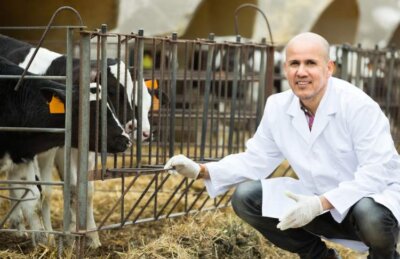
Even before it had a name, Evidence-Based Veterinary Medicine was nothing new to vets looking for the best outcome for their patients and clients. EBVM is simply the formalisation of a vet’s everyday decision making.
One example of what happens in the absence of evidence-based principles is the prescribing of antibiotics to treat the symptoms of cold and flu; a practice made even harder to break by the demands of the patient that the doctor ‘do something’. With evidence-based medicine, every action – or withholding of action, might be summed up in five key-stage questions:
Observation: ‘What’s up?’ While there is no substitute for experience, there’s also no substitute for diligence. Careful questioning of the client, practical experience in knowing what to look for – in the surgery and under the veterinary microscope, together with veterinary diagnostic testing, will build up a picture of what’s really up.
Vets will take into account the welfare of the animal
Intention: ‘What good?’ This is where clinician and client focus what they want to achieve. Clients will have in their minds what the vet should do for their animal – and sometimes how it should be done. Vets will take into account the welfare of the animal before, during and after any intervention prior to embarking on a course of action.
Choosing the treatment
Information: ‘Says who?’ More information or guidance is often needed, but who to trust? Choosing the treatment most likely to match the desired outcome means critically evaluating the source and content of scientific, statistical and clinical data, trials or advice. Information must be soundly based on tested and proven fact rather than unquestioned tradition or something ‘heard on the grapevine… somewhere.’
Action: ‘What to do?’ In Evidence-Based Veterinary Medicine, answering this question comes surprisingly far down the list bringing with it the assurance of a course of action most likely to achieve the intended outcome.
Reflection: ‘So what?’ This is where your experience becomes part of the body of evidence. It might be an experience that guides only your future actions, those of your immediate colleagues or has an impact on the wider veterinary profession.
The precise interpretation of Evidence-Based Veterinary Medicine will, no doubt, be subject to revision under its own rules of assessment and application. Vets will require more and more information, not less. Vets will need and expect the level of convenience, speed and reliability from their veterinary data systems they already get from their veterinary laboratory diagnostics.

